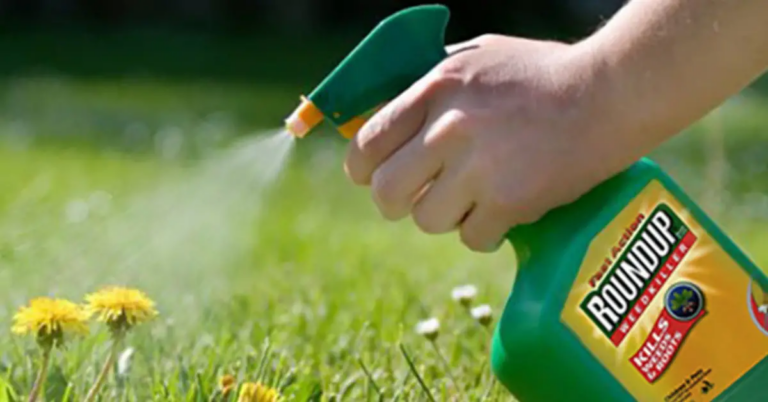The year began on a solemn note for fans of the Buffalo Bills and Cincinnati Bengals as a distressing incident unfolded on January 2, 2023, during their NFL game in Cincinnati, Ohio. Damar Hamlin, a safety for the Buffalo Bills, experienced a sudden cardiac arrest in the first quarter, sending shockwaves through the stadium.
Swift medical assistance arrived through EMTs who efficiently handled the situation. They immediately removed Hamlin’s helmet, provided him oxygen from a portable tank, and performed CPR for approximately eight minutes before transporting him to a nearby hospital. A press statement by the Bills’ organization revealed that Hamlin had suffered cardiac arrest following an on-field collision.
Cardiac arrest is a serious medical emergency that can occur without warning and requires immediate intervention. It is often confused with heart attack, another life-threatening condition. While these terms are sometimes used interchangeably, it is important to understand that they represent distinct medical events.
Cardiac Arrest vs. Heart Attack: Understanding the Difference
When it comes to cardiac health, understanding the differences between cardiac arrests and heart attacks is crucial. A heart attack occurs when a blocked artery restricts the flow of oxygen-rich blood to a section of the heart, potentially causing the affected heart muscle to die.
On the other hand, cardiac arrest is characterized by the sudden cessation of the heart’s beating due to an electrical malfunction. It can occur in individuals with or without an underlying heart disease or coronary artery disease (CAD). When cardiac arrest occurs, the heart fails to effectively pump blood, leading to loss of consciousness or gasping for breath.
In Hamlin’s case, the unexpected force and impact on the chest during the football game appeared to trigger cardiac arrest. According to the American Heart Association, without immediate intervention such as CPR or the use of an automated external defibrillator (AED), death can occur within minutes.[1]
Recognizing the symptoms and taking immediate action can be the difference between life and death.
Symptoms of Cardiac Arrest
Cardiac arrest is marked by the abrupt halt of the heart’s rhythmic contractions. This leads to immediate loss of consciousness, absence of breathing, and lack of pulse. Recognizing these symptoms and taking immediate action is vital, as death can occur within minutes without prompt treatment.
Some warning signs, such as chest pain, shortness of breath, weakness, dizziness, palpitations, and nausea, may precede a cardiac arrest.[2]
Symptoms of a Heart Attack
Symptoms of a heart attack can vary in intensity and duration. They can manifest abruptly or develop gradually with mild warning signs. It is important to note that some individuals may experience a heart attack without exhibiting any symptoms at all.
While chest pain is a common symptom, women may present different or atypical symptoms. Other symptoms may include shortness of breath, coughing, wheezing, nausea, anxiety, lightheadedness, sweating, weakness, and palpitations. It is crucial to seek immediate medical attention, even if unsure whether it is a heart attack.[3]
Causes of Heart Attacks and Cardiac Arrests
Heart attacks are often caused by coronary heart disease (CHD), which involves the build-up of fatty deposits (plaques) in the coronary arteries. This restricts blood flow to the heart, eventually leading to a heart attack.
Risk factors for CHD include smoking, an unhealthy diet high in saturated fat, high blood pressure, diabetes, obesity, a sedentary lifestyle, older age (particularly in men), and a family history of heart disease. [4,5]
Meanwhile, cardiac arrests can have various causes, including ventricular fibrillation (abnormal heart rhythm), ventricular tachycardia, changes in heart structure, pacemaker failure, respiratory arrest, choking, drowning, electrocution, hypothermia, sudden drop in blood pressure, drug abuse, excessive alcohol consumption, and other unknown reasons. Notably, a heart attack itself can trigger cardiac arrest.[6]

Fast Action Saves Lives
Be it a heart attack or cardiac arrest, prompt action is essential. Take note of these steps when you suspect someone is going through a heart attack or cardiac arrest.
In Case of a Heart Attack
If you suspect a heart attack, call 911 or your emergency response number immediately. Emergency medical services (EMS) staff can provide faster treatment upon arrival, and calling for help ensures immediate access to medical facilities.
- Call emergency services (911 or local emergency number) immediately, even if uncertain about the symptoms.
- Utilize EMS services for faster treatment and transportation to a hospital.
- Follow the instructions given by emergency responders.
- If available, use an AED at the direction of EMS staff.
- Avoid self-transportation to the hospital, as EMS staff can provide essential care en route.
In Case of Cardiac Arrest
If cardiac arrest occurs, these actions can significantly increase the chances of survival.
- Check for responsiveness and shout for help.
- Call emergency services (911 or local emergency number) immediately.
- Begin performing high-quality CPR until professional medical help arrives.
- If alone, initiate CPR before leaving the person to call for help. In cases involving infants or children, prioritize airway obstruction and start CPR immediately, following the appropriate guidelines.
- Retrieve an AED if nearby and use it as instructed. Early defibrillation with an AED is crucial for survival.
My Personal RX: 5 Natural Ways to Boost Heart Health
Maintaining a healthy heart is crucial for preventing cardiac arrest and heart attacks. By incorporating natural strategies into your daily routine, you can significantly improve your heart health.
- Pure N-Acetyl Cysteine (NAC) for Antioxidant Support:
My Pure N-Acetyl Cysteine (NAC) supplement is a powerful antioxidant supplement that plays a crucial role in managing high blood pressure. By elevating glutathione levels, one of the body’s essential antioxidants, NAC contributes to various metabolic processes and supports the health of critical body systems, including the respiratory, hepatic, and immune systems. Incorporating NAC into your daily routine can provide valuable antioxidant support for your heart health.
- Daily Physical Activity:
Engaging in regular physical activity is an excellent way to strengthen your heart and reduce the risk of heart attacks and cardiac arrest. Aim to incorporate at least 30 minutes of moderate physical activity into your daily routine. Activities such as brisk walking, jogging, cycling, swimming, or dancing can help improve cardiovascular fitness, lower blood pressure, and maintain a healthy weight. Check out my free guide on living a healthier lifestyle for practical tips on incorporating physical activity into your daily routine.

- Heart-Healthy Diet:
Focus on consuming a balanced diet that includes plenty of fruits, vegetables, whole grains, lean proteins, and healthy fats. Limit your intake of saturated and trans fats, added sugars, and sodium. Incorporate heart-healthy foods such as fatty fish rich in omega-3 fatty acids, nuts, seeds, and olive oil. These dietary choices can help reduce inflammation, lower cholesterol levels, and support overall heart health.
- Stress Management:
Chronic stress can negatively impact heart health. Finding effective ways to manage stress is crucial for preventing cardiac events. Consider incorporating stress-reducing practices into your daily routine, such as meditation, deep breathing exercises, yoga, or engaging in hobbies and activities that bring you joy. Prioritizing self-care and maintaining a healthy work-life balance can also reduce stress and improve heart health.
- Quality Sleep:
Adequate sleep plays a vital role in maintaining heart health. Aim for 7-8 hours of quality sleep each night. Poor sleep quality and duration have been linked to an increased risk of heart disease and other cardiovascular conditions. Establish a consistent sleep schedule, create a relaxing bedtime routine, and optimize your sleep environment to promote restful sleep. If you struggle with sleep issues, consult with a healthcare professional for guidance and support.
Save Hearts Through Knowledge and Informed Actions
Recognizing the differences between cardiac arrest and heart attacks can save lives. Taking prompt action, whether it involves calling for emergency services, performing CPR, or using an AED, is critical in both situations.
Understanding the symptoms and risk factors associated with these life-threatening conditions empowers individuals to take preventive measures and seek immediate medical attention when necessary. By spreading awareness and promoting timely action, we can improve cardiac health outcomes and potentially prevent the devastating consequences of cardiac events.

References:
- CPR facts and stats. (n.d.-b). American Heart Association. https://cpr.heart.org/en/resources/cpr-facts-and-stats
- Cardiac Arrest – Symptoms | NHLBI, NIH. (2022, May 27). National Heart, Lung, and Blood Institute. https://www.nhlbi.nih.gov/health/cardiac-arrest/symptoms
- Heart Attack – Symptoms | NHLBI, NIH. (2022, March 24). National Heart, Lung, and Blood Institute. https://www.nhlbi.nih.gov/health/heart-attack/symptoms
- Torpy, J. M., Burke, A. E., & Glass, R. M. (2009). Coronary heart disease risk factors. Jama, 302(21), 2388-2388. https://doi.org/10.1001/jama.302.21.2388
- Heart Attack – Causes and Risk Factors| NHLBI, NIH. (2022, March 24). National Heart, Lung, and Blood Institute. https://www.nhlbi.nih.gov/health/heart-attack/causes
- Cardiac Arrest – Causes and Risk Factors | NHLBI, NIH. (2022, May 19). National Heart, Lung, and Blood Institute. https://www.nhlbi.nih.gov/health/cardiac-arrest/causes




















